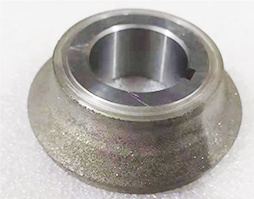Features of diamond drill bits
Category: Industry News
Oct 19,2021
The quality of the drill bit, the type of drill bit, and whether they are suitable for the lithology of the formation play an important role in accelerating drilling speed and improving penetration.Diamond drill bitGenerally speaking, when drilling an oil and gas well, various sizes of drill bits are used. A larger diameter drill bit is used for upper layers. Since the formation being drilled is soft, a single drill bit can achieve a long penetration depth and has a short usage time; one drill bit can generally be reused for several wells. However, when drilling deeper formations, a smaller diameter drill bit should be used due to the harder formation, resulting in less penetration per single drill bit, usually requiring more than one drill bit. The penetration rate of new types of drill bits mainly depends on the size and type of the drill bit, the hardness of the formation, and the matching of drilling parameters. Generally speaking, the smaller the size of the drill bit and the harder the formation, the less penetration there will be. Conversely, with larger sizes and softer formations, there will be more penetration.
Advantages of diamond drill bits:
1. Force balance design ensures good guidance for the drill bit; diamond drill bits are suitable for directional drilling with downhole motors and have low radial vibration.
2. The reasonable arrangement of patented PDC cuttings with different structures at various positions on the drill bit gives diamond drill bits strong aggressiveness and wear resistance.

3. Strong aggressive design allows for high drilling speed.
4. Applying dynamic flow field simulation technology to hydraulic design optimizes bottom hole flow fields, which helps improve chip removal speed and prevent mud packing.
Diamond drill bits are mainly made from cast tungsten carbide and diamond composite materials; they have a long service life and high value.
The rock-breaking effect of diamond drill bits is achieved by diamond particles. To understand how effective a drill bit is at breaking rock, one must know how effective a single diamond particle is at breaking rock. In hard formations, rocks experience high stress under pressure which leads to a transition from brittle to plastic behavior in rocks. When a single diamond particle erodes through a formation under torque's influence while cutting through rock, its cutting depth is essentially equal to that particle's erosion depth. This process resembles 'plowing', hence it is referred to as plowing cutting action in diamond drills.
In some brittle rocks (such as sandstone or limestone), under simultaneous torque action while breaking rocks, the volume broken far exceeds that which can be absorbed or rotated by diamond particles. When pressure is low, only small grooves can form along the direction of movement; as pressure increases, both deep grooves and surrounding rock will break beyond the cross-sectional size of diamond particles.
Diamond drill bit's rock-breaking effect not only relates to lithology and external factors (such as pressure, temperature, properties of formation fluids), but also significantly depends on weight on top of the drill bit itself. Diamond drills break rock through three methods: surface fracturing, fatigue fracturing, and volumetric fracturing. Only when diamond particles have sufficient specific pressure to penetrate into formation rocks can volumetric fracturing occur to achieve ideal rock-breaking effects.
Related Articles
Aug 16,2021
Mar 18,2022
Aug 16,2021
Aug 16,2021
Aug 27,2021
Aug 27,2021







